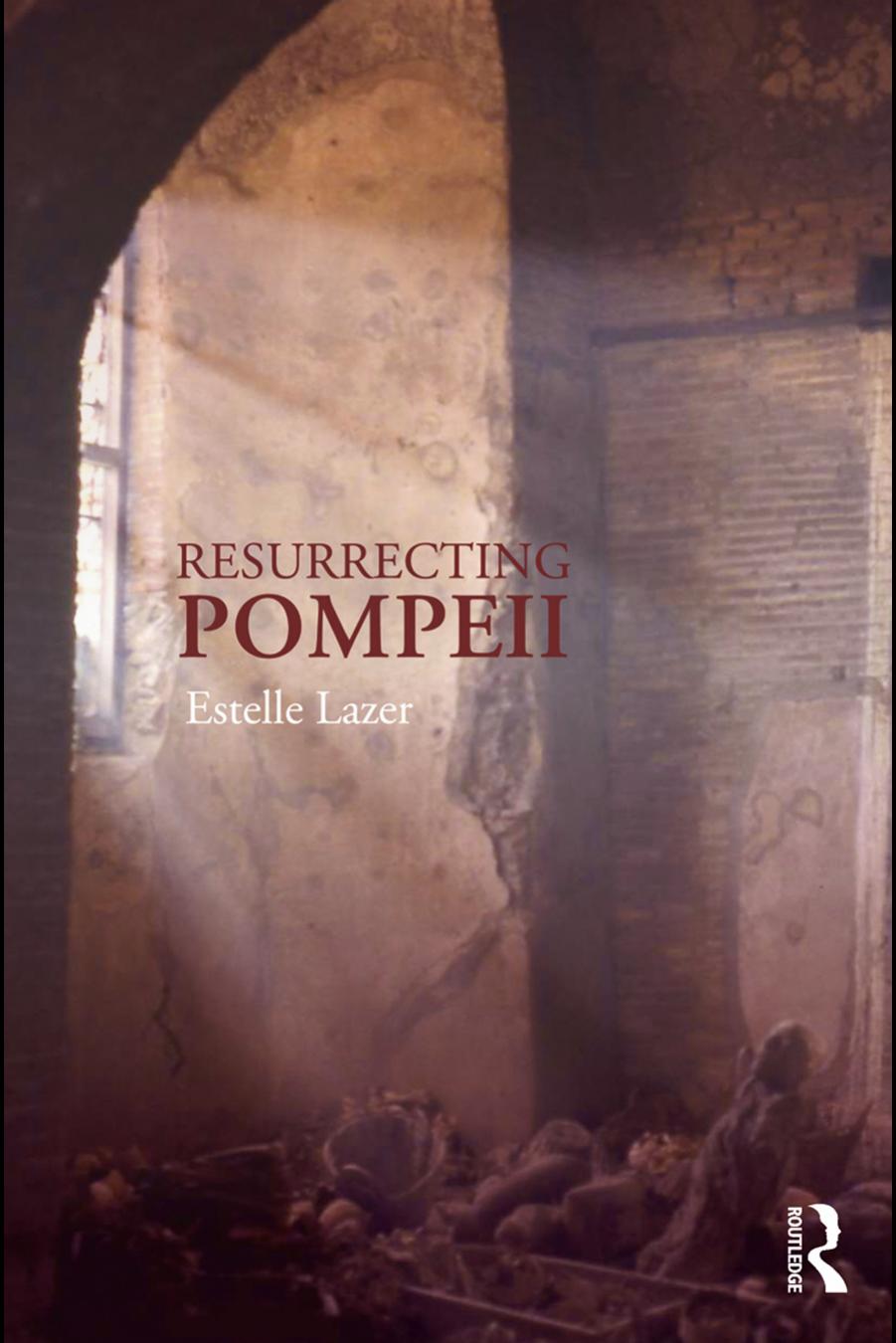Resurrecting Pompeii by Estelle Lazer

Author:Estelle Lazer
Language: eng
Format: mobi, epub, azw3, pdf
Tags: Sociology, Italy, Social Science, Human remains (Archaeology) - Italy - Pompeii (Extinct city), Social Studies, Ancient, Europe, Human remains (Archaeology), Anthropology, Excavations (Archaeology) - Italy - Pompeii (Extinct city), Ancient - Rome, History - General History, Rome, Forensic osteology, Ancient Rome, Pompeii (Extinct city), Excavations (Archaeology), Archaeology, History, Naples Region (Italy) - Antiquities, General, Naples Region (Italy), Classical Greek & Roman archaeology
ISBN: 9780415261463
Publisher: Routledge
Published: 2009-07-23T07:00:00+00:00
Figure 8.11 Inner table of the frontal bone of a skull (TdS 28) displaying pronounced hyperostosis frontalis interna (HFI)
Figure 8.12 View through the foramen magnum of a skull (TF SND) displaying extensive hyperostosis frontalis interna (HFI)
equivocal cases were not included with the diagnosed cases of HFI. The bony growths associated with these cases tended to be rather asymmetrical, though it has been suggested that HFI can present as asymmetrical in the early stages of development.141 Also, some of the cases may have appeared asymmetrical because the skulls were incomplete. When it has been possible to reconstruct skulls with this disorder from fragments found in the Sarno Bath collection, the expression does appear both greater and more symmetrical.
Hyperostosis frontalis interna is anatomically characterized by the occurrence of bilaterally symmetrical, benign bony tumours and marked thickening on the internal surface of the frontal bone. The midline is generally spared, which gives it a ‘butterfly-like’ appearance. When viewed in crosssection, the new bone is mostly revealed to be cancellous and integrated with the diploë, or spongy tissue between the inner and outer tables of the cranial bones. Diagnosis of this disorder is based on the existence of such growths, irrespective of their degree of expression. HFI has been classified by some scholars as a symptom of various syndromes but current wisdom is that it is a distinct pathological entity. It has been described as the most obvious skeletal indicator of an endocrine disorder of uncertain aetiology, or origin, and there has been considerable discussion about its clinical manifestations. It has been suggested that HFI is associated with hyperlactinaemia. This results in an increase of adrenal androgen production, carbohydrate tolerance and hypothalamic hormone secretions, all of which would contribute to the occurrence of obesity, hirsutism and diabetes. Other suggested contributors to the development of HFI include estrogens, dietary phytoestrogens, parathyroid hormone, calcium modulating agents and neuropeptides.142
Based on unselected samples in hospitals, the frequency of hyperostosis frontalis interna in modern European populations is generally thought to vary between 5 per cent and 12 per cent, though some scholars suggest the incidence might be as high as 15 per cent.143 The frequency of HFI in the Pompeii sample, at between 11.1 per cent and 11.9 per cent, is consistent with this range.
Surveys of the incidence of HFI in modern Western populations indicate that HFI is most commonly associated with females.144 It has been, perhaps rather extravagantly, suggested that the correlation between the occurrence of HFI and women is so high that its presence alone should be sufficient as a basis for sex attribution from archaeological skeletal material.145
It is most frequently observed on post-menopausal women, with a reported incidence of 40–62 per cent amongst this group in modern populations, and has been associated with adiposity and male-type hair growth patterns, though the three features do not always occur together. Various other signs and symptoms can accompany HFI, the most common being headaches. HFI-associated headaches apparently are hormonally induced and not related to excess bony development. The degree
Download
Resurrecting Pompeii by Estelle Lazer.epub
Resurrecting Pompeii by Estelle Lazer.azw3
Resurrecting Pompeii by Estelle Lazer.pdf
This site does not store any files on its server. We only index and link to content provided by other sites. Please contact the content providers to delete copyright contents if any and email us, we'll remove relevant links or contents immediately.
| Anthropology | Archaeology |
| Philosophy | Politics & Government |
| Social Sciences | Sociology |
| Women's Studies |
Mysteries by Colin Wilson(3395)
People of the Earth: An Introduction to World Prehistory by Dr. Brian Fagan & Nadia Durrani(2701)
Ancient Worlds by Michael Scott(2623)
Foreign Devils on the Silk Road: The Search for the Lost Treasures of Central Asia by Peter Hopkirk(2433)
The Splendid and the Vile by Erik Larson(2354)
The Memory Code by Lynne Kelly(2353)
Come, Tell Me How You Live by Mallowan Agatha Christie(2212)
Lost Technologies of Ancient Egypt by Christopher Dunn(2194)
The Earth Chronicles Handbook by Zecharia Sitchin(2179)
The Plantagenets by Dan Jones(2039)
Last Chance to See by Douglas Adams(1933)
The Return of the Gods by Erich von Daniken(1895)
Wars of the Anunnaki by Chris H. Hardy(1681)
Keeper of Genesis by Graham Hancock(1608)
Before the Dawn by Nicholas Wade(1575)
The Cygnus Mystery by Andrew Collins(1521)
The Message of the Sphinx by Graham Hancock(1482)
Fragile Lives by Stephen Westaby(1421)
Hieroglyphs: A Very Short Introduction by Penelope Wilson(1313)
